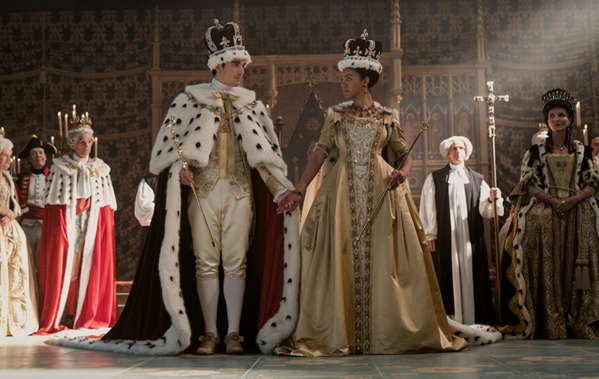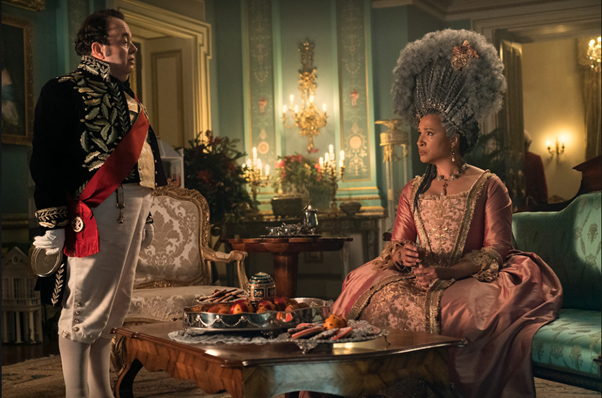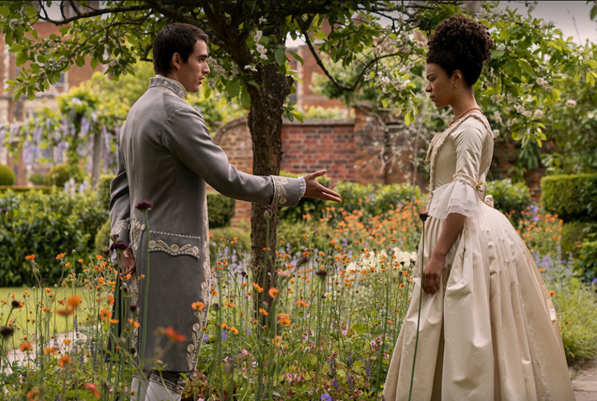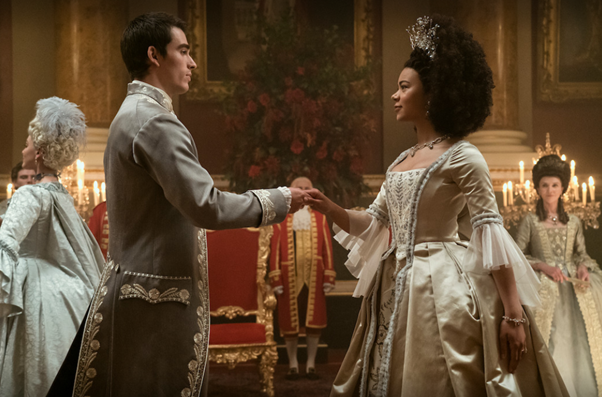The Bridgerton prequel has certainly delivered on its promise of romance, tension, and emotion.
It explores Queen Charlotte’s rise to power in the British royal family as a Black woman. The prequel wastes no time in addressing the concerns raised in the first series about colour blindness. Before the series can even begin, Lady Whistledown warns us that “this is the story of Queen Charlotte from Bridgerton”. “It is not a history lesson – it is fiction inspired by fact. All liberties taken by the author are quite intentional. Enjoy.”

The series is split across two timelines with India Amarteifio playing the young Charlotte with Golda Rosheuvel returning as her older self in the flash-forward scenes.
The Bridgerton present occupies less of the time where we follow Queen Charlotte trying to get one of many useless children to produce a (viable) heir. Charlotte is in shock that she and George managed to have 15 children and yet there is still no heir. Her daughters are apparently ‘virgins’ and her sons ‘whores’ – Charlotte’s words not mine!

The focus of the series is Bridgerton past, and the love story between Charlotte and George. Aged just “seven-and-10”, she is shipped from Germany to England to wed the young British king, George III (Corey Mylchreest).
We are introduced to an independent and powerful Charlotte who is outraged that she is having to marry. George and Charlotte meet in a charming and funny interaction in which she (unknowingly) tells the king she does not want to marry him. George seems to respect her agency, telling her that it is her decision whether she marries him or not. Impressed by this, Charlotte decides he isn’t so bad, which may prove to be a mistake…
We learn much more about Brimsley (the Queen’s man)- in particular his relationship with Reynolds (the King’s man), as Bridgerton introduces its first queer relationship.

As previously mentioned, this series addresses audience’s concerns about the confusing colour-blindness in series one. Audiences assumed that Bridgerton was set in a colour blind society. That is, until Lady Danbury stated that people of colour hadn’t always been welcomed in Bridgerton. The prequel clears up how this works. Charlotte states that “no one who looks like you or me has ever married one of these people”.
The colour blind society that we see in Bridgerton comes about because of “the Great Experiment” performed by the king’s mother, Dowager Princess Augusta (Michelle Fairley). Augusta elevates wealthy Black families to nobility to make the new queen blend in. Even she, however, cannot force the aristocracy to accept their new equals. Among the newly titled is a young Lady Danbury (Arsema Thomas), who quickly becomes Charlotte’s confidante and explains that Charlotte has the chance to join the ton together.

The series depicts George’s growing mental suffering and the emotional toil both characters feel is felt by the audience too. The series is emotionally tense but the joy of Bridgerton is not overwhelmed.
The prequel was just what we needed to bridge the gap whilst we wait for the next Bridgerton series. But dare I say, that this might be favourite series yet!